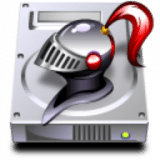- Joined
- Sep 16, 2008
- Messages
- 3,574
- Reaction score
- 618
- Points
- 113
- Location
- Canada
Hi,
I have not been on this forum for the longest time.
Now I'm wondering if anyone can help.
I have a 2017 MacBook Air where the SSD is acting up.
The battery suddenly no longer charged and boot up does not complete on that unit - tried two different Apple brand chargers and reset PRAM and SMC, didn't help with the charging.
To top it off - after doing these resets, the MBa now longer completes the boot up - progress bar goes about 2/3rds across and then stops.
I then booted up with an external backup and got a Disk Utility message that DU cannot repair the disk (SSD) but the SSD can be read.
So I created a 500 GB partition on the external drive, booted up on the backup with the intention to copy whatever files I could find on the MBa HD to that 500GB external. The external btw is a 2 TB spinner.
But when I booted up using the external backup, the backup and the 500 GB partition shows on the desktop, but the internal MBa HD no longer does.
Strangely enough, I still get the DU message that it can read but not repair the HD and when I check with DU, trhe HD shows in DU.
I have some disk repair tools on my MacMini, so the next step was going to be to remove the Apple SSD from the MacBook Air, place it into a USB enclosure and work on the MBa SSD on thec MacMini where I don't also have the power issue.
But where do I find an SSD enclosure that is compatible with the Apple SSD pin outs?
Does such a thing exist?
I have not been on this forum for the longest time.
Now I'm wondering if anyone can help.
I have a 2017 MacBook Air where the SSD is acting up.
The battery suddenly no longer charged and boot up does not complete on that unit - tried two different Apple brand chargers and reset PRAM and SMC, didn't help with the charging.
To top it off - after doing these resets, the MBa now longer completes the boot up - progress bar goes about 2/3rds across and then stops.
I then booted up with an external backup and got a Disk Utility message that DU cannot repair the disk (SSD) but the SSD can be read.
So I created a 500 GB partition on the external drive, booted up on the backup with the intention to copy whatever files I could find on the MBa HD to that 500GB external. The external btw is a 2 TB spinner.
But when I booted up using the external backup, the backup and the 500 GB partition shows on the desktop, but the internal MBa HD no longer does.
Strangely enough, I still get the DU message that it can read but not repair the HD and when I check with DU, trhe HD shows in DU.
I have some disk repair tools on my MacMini, so the next step was going to be to remove the Apple SSD from the MacBook Air, place it into a USB enclosure and work on the MBa SSD on thec MacMini where I don't also have the power issue.
But where do I find an SSD enclosure that is compatible with the Apple SSD pin outs?
Does such a thing exist?







